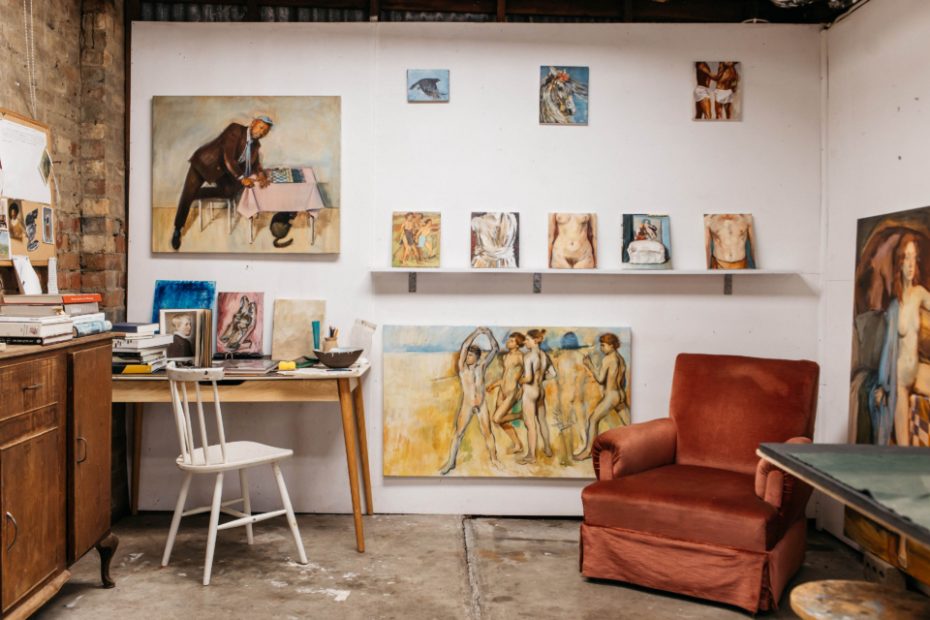Artist Archer Davies Reimagines Historic Paintings In His New Exhibition, Theft
Studio Visit
The studio of artist Archer Davies ahead of his new show, Theft.
Archer describes his work as a contemporary continuation of art historical themes and genres.
Archer in his studio.
Archer paints with oil paints and sometimes gouache.
Wild things run fast is among Archer’s new paintings that references Degas’ work — specifically the French impressionist artist’s heavily reworked (and perhaps unfinished) 1880s work The Fallen Jockey.
Archer soon found himself drawn to more historic works that were unfinished, or heavily reworked, especially those of Bazille, Balthus and Degas.
Archer’s larger oil paintings take over a month to complete, while smaller works take around two weeks.
‘My paintings are often worked up to near completion and then scraped back and reworked to try and allow more chance and spontaneity in the brushwork,’ says Archer.
Wild things run fast
Breath
Spanish Horse
Possession
Archer Davies’ work often begins with references to art historical paintings.
His new exhibition, Theft — opening today at Melbourne’s Mars Gallery — was initially inspired by the work of artists such as Titian, Diego Velázquez, Édouard Manet and Edgar Degas, who often depicted horses in their paintings.
Archer became interested in exploring these horses’ atavistic powers: the swooping line of their necks and their powerful spines, unified by the gentle barrel of their bellies. They seemed neither male nor female, but symbolically androgynous.
Wild things run fast is among Archer’s new paintings that references Degas’ work — specifically the French impressionist artist’s heavily reworked (and perhaps unfinished) 1880s work The Fallen Jockey.
‘It does this both in its composition and the horse’s head on the left, which is a direct study from that painting,’ Archer explains.
Archer soon found himself drawn to more historical works that were unfinished, or heavily reworked, including those by Frédéric Bazille and Balthus.
‘I saw myself joining in their struggle to complete their paintings. I was taking up the task of interpreting their meaning and reworking, cropping, cutting and copying them into my own original compositions, often using friends as models who posed for me in my studio,’ he says.
The Young Spartans (I) is Archer’s version of Degas’ preparatory study for ‘Young Spartans Exercising’ — a circa 1860 painting the artist famously reworked over many years but never completed.
Birds are also a new theme of Archer’s work, appearing twice in Theft. The 11 paintings in the exhibition aim for tension between a beautiful surface of colour and brushwork, and the intimacy and psychological depth of the human subject.
‘Staged theatrical compositions are embodied in a style that is both gestural and realistic and often reminiscent of a cinematic mise en scène where the protagonists exist in their own mysterious world,’ Archer says.
They are works inspired by the past, but interpreted for a contemporary ‘living’ context.
‘I hope that the paintings have an intimacy to them that the viewer can spend time with,’ says Archer.
‘Narrative threads are suggested, but read in a poetic way rather than a linear ‘story’, intentionally leaving interpretation open for the viewer.’
Theft by Archer Davies
Friday November 8-Saturday November 30
Mars Gallery
7 James Street
Windsor 3181
